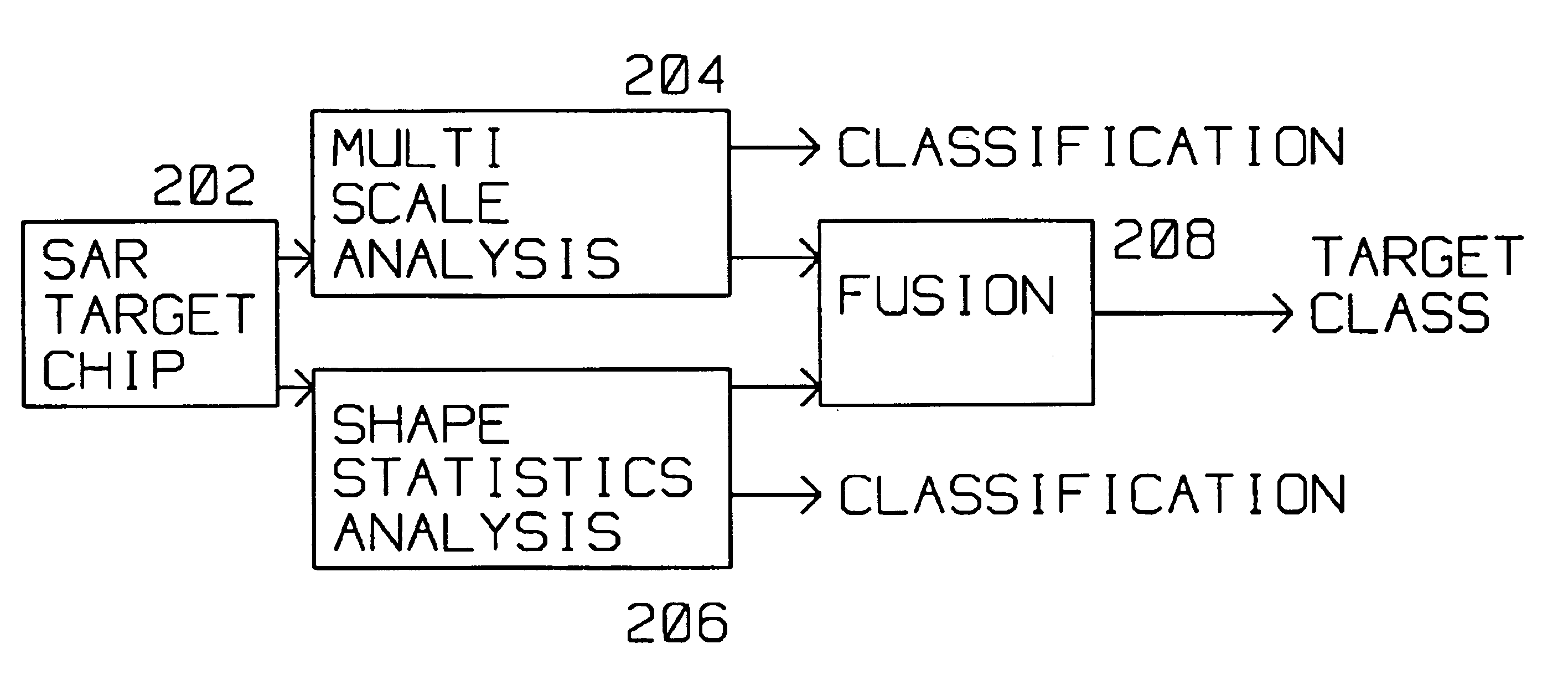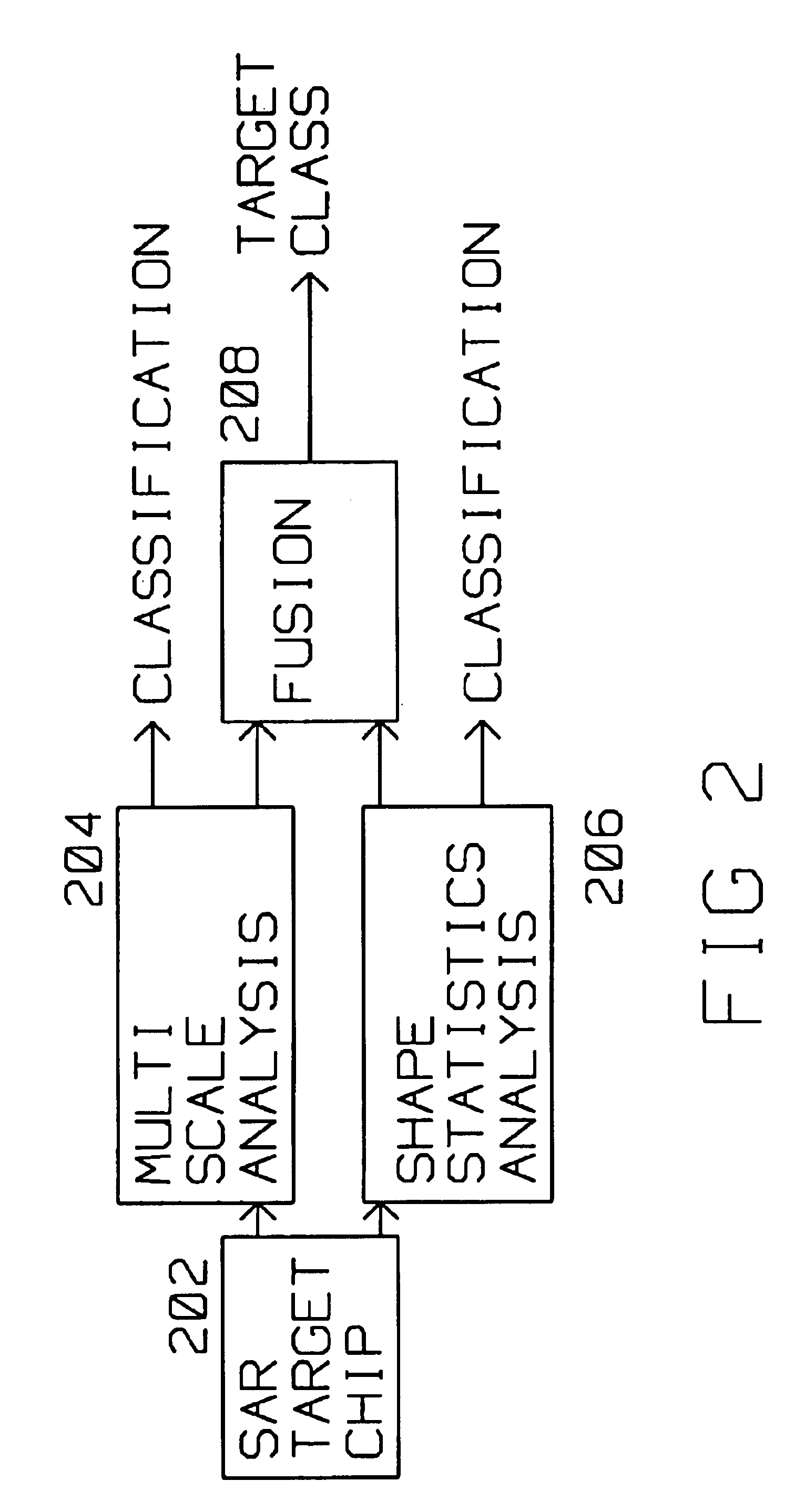Fusion of shape and multiscale features for unknown target rejection
a multi-scale, target technology, applied in the direction of instruments, measurement devices, using reradiation, etc., can solve the problems of imperfect/cps, no mechanism to adapt to an unknown target, and difficult to discern the outline of the target from its background
- Summary
- Abstract
- Description
- Claims
- Application Information
AI Technical Summary
Problems solved by technology
Method used
Image
Examples
Embodiment Construction
[0025]The present invention describes an apparatus and method of target identification problem using two complementary recognition algorithms operating in parallel with subsequent fusion of results to produce a final classification, as shown in FIG. 2. The first recognition algorithm is based on a multiscale analysis, while the second uses shape statistics analysis. They complement each other well because the multiscale approach does not rely on segmentation of the target from the background, but is not invariant to scale, translation, or rotation. In contrast, the shape statistics approach is completely invariant to scale, translation, and rotation. However, shape statistics analysis relies on good quality segmentation of the target from the background.
[0026]Another aspect of the invention is that it can adapt to specific characteristics of a target,that is it can be “trained” from the examination of radar returns acquired for a particular target (image chips) acquired at different...
PUM
 Login to View More
Login to View More Abstract
Description
Claims
Application Information
 Login to View More
Login to View More - R&D
- Intellectual Property
- Life Sciences
- Materials
- Tech Scout
- Unparalleled Data Quality
- Higher Quality Content
- 60% Fewer Hallucinations
Browse by: Latest US Patents, China's latest patents, Technical Efficacy Thesaurus, Application Domain, Technology Topic, Popular Technical Reports.
© 2025 PatSnap. All rights reserved.Legal|Privacy policy|Modern Slavery Act Transparency Statement|Sitemap|About US| Contact US: help@patsnap.com



